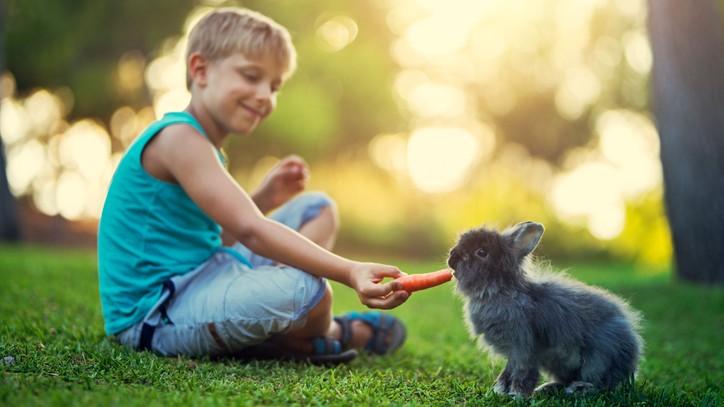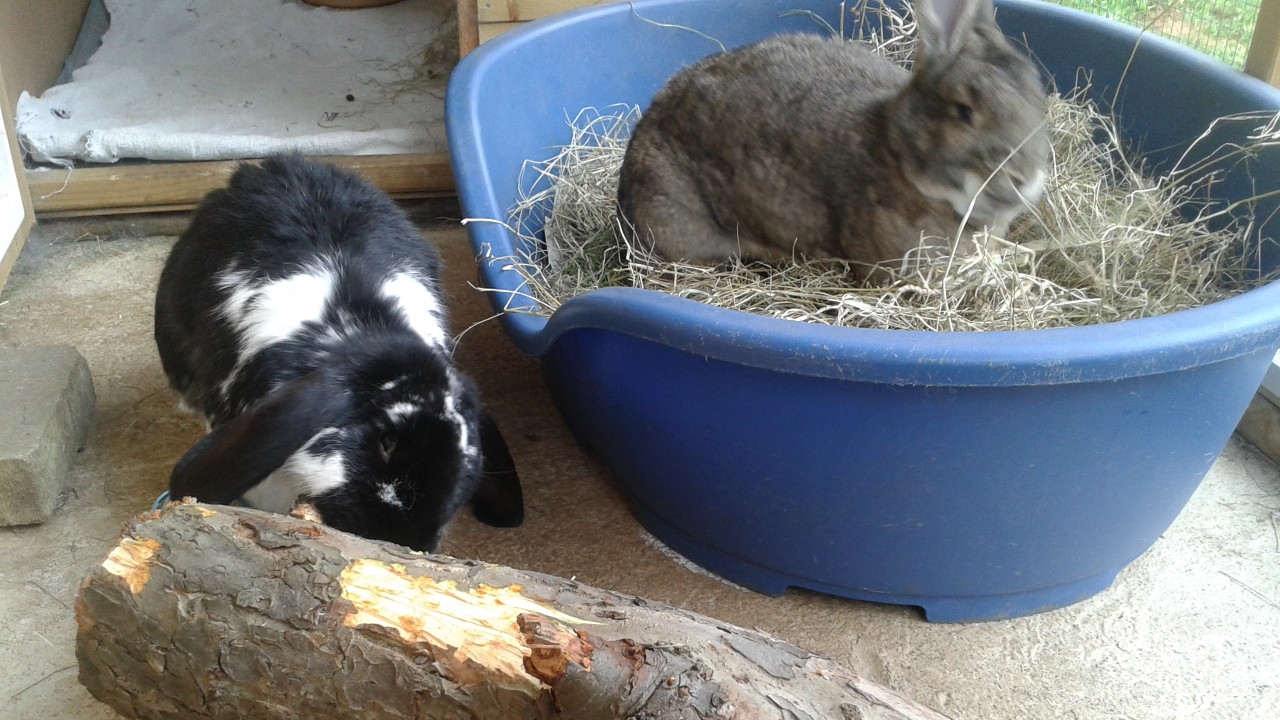Games for rabbits: Stop your bunny from getting bored
Playing these games for rabbits with your pet will help you both bond and are good for welfare and health.

The best games for rabbits will encourage your pet to exhibit many of the behaviours of their wild counterparts. Thinking about these behaviours should give you some ideas.
Natural behaviours which rabbits find enjoyable include: foraging for tasty food, exploring surroundings, digging, chewing, and ‘letting off steam’ by running around and ‘binkying’ (running at high speed, leaping, twisting, and flicking their legs).
Rabbits may enjoy the company and interaction of their owner, but we can never fully replace another rabbit’s companionship, so always keep your rabbit with a rabbit companion.
- Best rabbit toys: Pick out the top toys for your BFF bunny
General do's and don'ts for playing with your rabbit
Games and play must be on your rabbit’s terms – never force a rabbit to play if they do not want to and never chase your rabbits. Using harnesses on rabbits and taking them for walks, as we do with dogs, is unsuitable. As a prey animal, rabbits can be highly stressed and scared of the restraint of a harness, and will not walk on a lead in the manner of a dog. They often panic and try to escape, which can cause serious injuries to them. They need the opportunity to choose when to exercise and play.
Provide your rabbits with different opportunities to play, and vary these weekly to keep their interest. Everything that is given to rabbits must be safe if chewed, so do not offer soft plastic which may be swallowed if chewed, or other items which may prove dangerous.
- Best rabbit runs: The top enclosures for your bunnies
- Best rabbit hutches: Find the perfect home for your bunny
- Best rabbit brushes: Keep their fur in fabulous condition

What types of play do rabbits enjoy?
Think about how wild rabbits behave to give you ideas of what you can offer to motivate your rabbits’ natural behaviours. These could include:
- Digging opportunities – If your rabbits have access to a safe enclosure outdoors, allow them the opportunity to dig. Houserabbits and those without access to grass can be given a large litter tray or large dog bed made of plastic, filled with soil or children’s play sand, allowing them the chance to dig.
- Forage – Bury some of your rabbits’ pellet allowance or fresh vegetables in a pile of hay, and watch them find and dig out the food. This provides them with the opportunity to use their acute sense of smell to sniff out the food.
- Tunnels – Rabbits love tunnels to run through and sleep in. The enclosed nature of them makes rabbits feel secure and a tunnel system can be created for them.
- Cardboard boxes and mazes – Mazes are cheap and easy to create by collecting large cardboard boxes, then cutting holes between them. As an addition, food can be placed in the boxes with hay to allow foraging opportunities.
- Items to throw around – It isn’t clear if rabbits enjoy throwing items around or simply do it to move them out of the way! Either way, it may be something your rabbits enjoy. Offer items made from willow, apple tree or seagrass, which can also be chewed. Other items, such as children’s plastic building cups, can be offered. These can be turned upside down with food placed under them so the rabbits have to turn the cups over to get to the food.
- Apple tree logs and branches – Most rabbits love to chew these and will happily strip the bark off within a matter of days. Make sure the wood has not been treated with pesticides.
- Vegetable washing line – Use wooden clothes pegs to hang small pieces of your rabbits’ daily vegetable allowance from a string washing line, a couple of feet high, which encourages them to stand on their hind legs to reach the food. This should only be given under supervision.
- Boxes and hides – Different sized boxes of differing heights, allow the rabbits to look out on their environment and hide away when they feel scared.
- Treat balls – Place some pellets in the balls and watch the rabbits roll them around to get the food out.
- Cardboard tubes – Use the inner cardboard tubes from kitchen or toilet rolls, stuff hay and some of your rabbits' pellets, treats or vegetables inside, so they can throw them around and hunt for the goodies.
Sit with your rabbits in their enclosure and feed them small pieces of vegetables or some of their pellet allowance. When they are happy to come to you, you can teach them their name and encourage them to come when called (although some rabbits may choose to ignore you if they are doing something they think is more interesting!). Rabbits can also be clicker trained, like dogs, so interacting with them is enjoyable for both you and your rabbits.
Get the best advice, tips and top tech for your beloved Pets
Are games important?
Yes. Rabbits that are motivated and able to exhibit natural behaviours will be happier and less stressed. They will perform less abnormal behaviour, such as aggression, excessive grooming, and chewing their environment, and will interact and feel more at ease with their owners. From a health point of view, being active ensures they burn off more calories and increase use of their cardiovascular and musculoskeletal system, helping prevent obesity, joint, and heart problems.
As prey animals, rabbits play differently from dogs and cats. They entertain themselves with behaviours they would perform in the wild. Thinking about these behaviours can help you to create fun ideas to stimulate them, which will keep them entertained, and be good for their mental and physical welfare.
Claire currently works in Kettering as a Head Nurse in a practice with a high rabbit caseload, as well as frequently lecturing and writing on rabbits to both veterinary professionals and owners.

